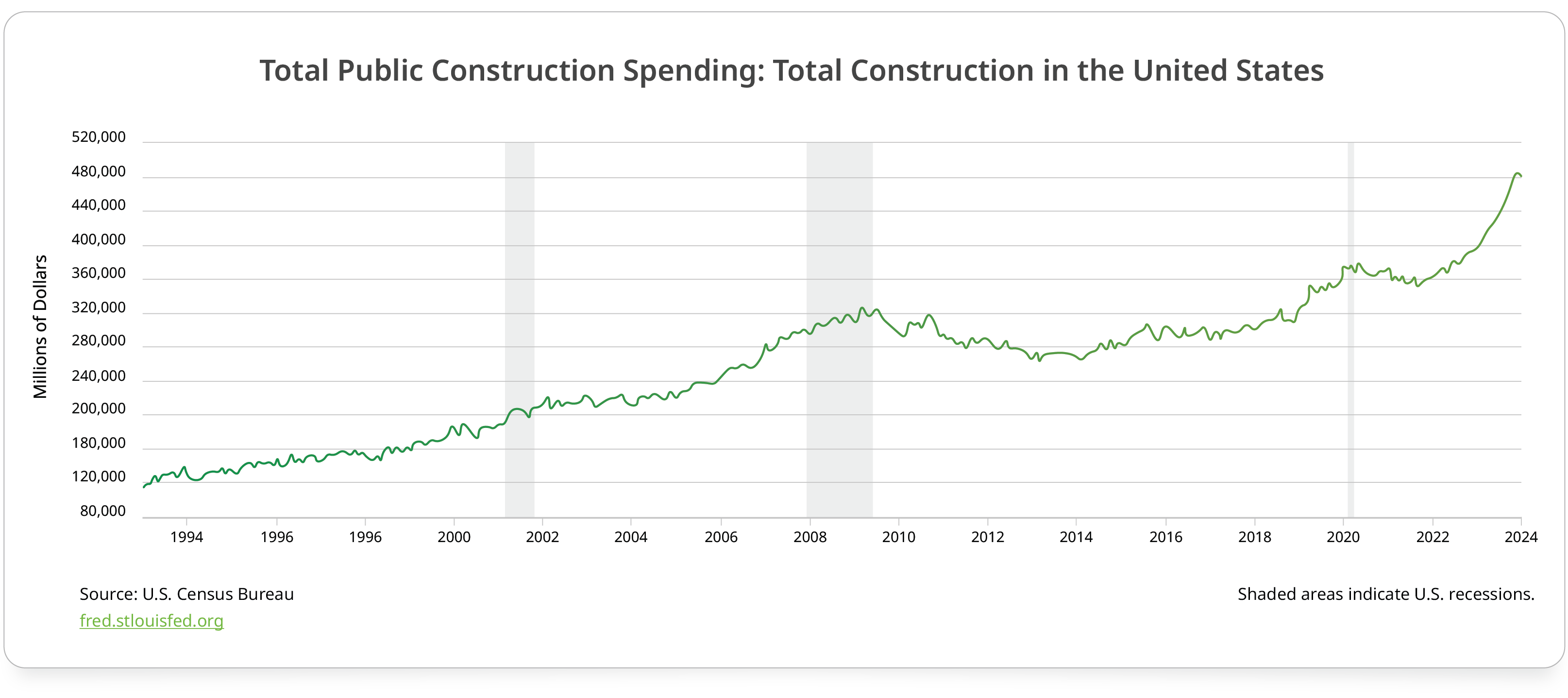New infrastructure spending initiatives are being introduced across the United States, spurring discussions about their potential effects on various sectors. Due to the nature of these projects, one of the sectors most likely to be impacted by this increased spending is equipment sales.
Take construction for example. The chart below shows substantial growth in public spending over recent years:

But that’s not the only industry this data predicts will see increased demand. Here are several key sectors likely to feel the effects of today’s infrastructure spending:
- Construction
Infrastructure projects, such as roads, bridges, and public facilities, require heavy machinery and construction equipment. With increased funding directed towards infrastructure development, the construction sector will likely experience substantial growth in the coming months. Contractors and construction companies are likely to invest in new equipment to meet project requirements, and maintenance and repair services for existing machinery are expected to see an uptick in demand as projects progress. - Transportation
Investments in transportation infrastructure, including railways, airports, and ports, will drive demand for specialized equipment tailored to these sectors. These expansion projects, modernization efforts, and upgrades in transportation networks will require a diverse range of vehicles, machinery, and technological solutions. Equipment sales in areas such as locomotives, aircraft, and cargo handling equipment are projected to experience positive growth as infrastructure enhancements continue. - Utilities and Energy
Today’s infrastructure spending includes upgrades and expansions to utilities infrastructure, such as water systems, power grids, and renewable energy projects. As utilities work to modernize and enhance their infrastructure, there will be a surge in demand for equipment related to energy generation, transmission, and distribution. This includes heavy-duty machinery for construction, installation, and maintenance tasks, as well as specialized equipment for renewable energy projects. - Manufacturing and Supply Chain
Manufacturing industries that supply equipment and components to infrastructure projects are likely to experience growth as well. Increased demand for construction machinery, transportation vehicles, and utility equipment will drive production and stimulate growth in manufacturing sectors. Additionally, improvements in infrastructure can enhance supply chain efficiency, leading to increased demand for material handling equipment, logistics solutions, and warehouse automation technologies. - Technology
Infrastructure projects are increasingly incorporating advanced technologies such as IoT (internet of things), AI (artificial intelligence), and automation to improve efficiency, safety, and sustainability. Equipment manufacturers are responding by integrating smart features and connectivity into their products. As infrastructure projects continue to embrace digitalization and innovation, there will be a growing demand for technologically advanced equipment to meet modern project requirements.
As market demands continue to evolve, having a financial partner who can help you adapt your offerings and capture new opportunities is critical for equipment dealers. LEAF has been working with businesses across various industries and in all business cycles for more than 20 years, empowering them to take advantage of major market shifts and get the most out of every opportunity.